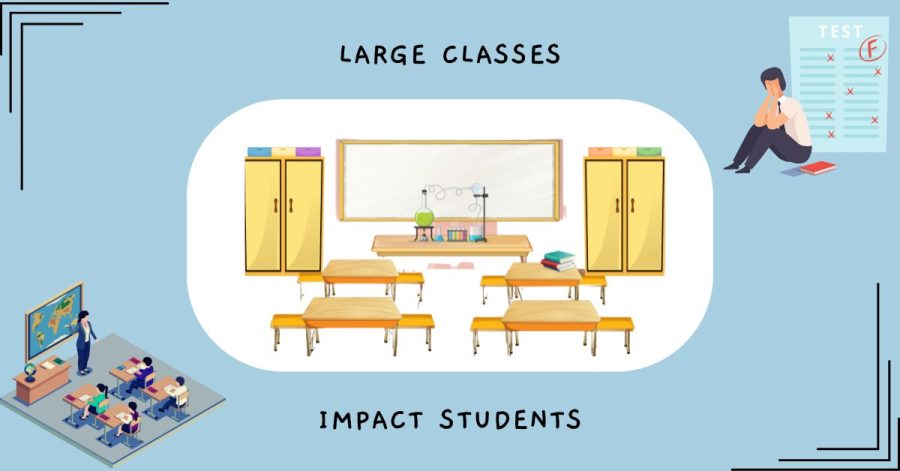Large class sizes negatively impact students

More stories from Gaby Sciaudone
Staff graphic by Gaby Sciaudone
In 2018, North Carolina legislators passed a house bill. This bill mandated that no class from kindergarten to third grade can exceed 22 people, and the average must be 18 people. However, there is no bill that puts a limit on high school class sizes.
It is not right to cram a large load of teenagers in a classroom and expect them to learn. Productivity increases in smaller classes because students are able to have more individualized attention from their teacher.
This is what many Wake County schools are missing out on in a lot of classes, since Wake County has been growing by 6,000 new students every year. This is a big issue; classes should be challenging because of their content, not because of overcrowding.
Larger classes affect people mentally as well. Studies have shown that students misbehave more in bigger classes because they can get away with it, but in smaller classes there is nowhere to hide and therefore less behavioral remediation is needed in those small classes.
There are ways we can transition from overfilled classes to compact ones. The first step would be to ask the State Board of Education for money to hire more teachers and teacher assistants for all the Wake County schools. Though this would be expensive, it would definitely benefit students in the long run.
It would also benefit teachers. Teacher morale improves when they do not feel overwhelmed by the number of students they have to keep track of and the number of classes they have to teach. High school teachers are not paid enough to have to deal with this overcrowding.
Several studies have taken place that compare small classes to large classes. A class size reduction program in California studied what happened when a third-grade class was reduced by 10 people. It proved to be quite effective in boosting student performance, as student participation increased by 90%.
Additionally, a study performed in Tennessee proved that when students were in smaller classes, they were more engaged and had better attendance. These researchers also found that when students were placed in small classes in lower grade levels, they were more likely to end up graduating college in the long run.
Large class sizes set students back academically. Several studies across the United States prove that the smaller the class is, the better test scores are. Additionally, a high school survey found that nine in 10 teachers believe in the power class size reduction has in advancing student learning.
A class-size mandate similar to the bill mentioned at the beginning would greatly benefit Wakefield High School, which has a 19-to-1 student-to-teacher ratio. These large class sizes are hurting us students, and it is time for a change.







